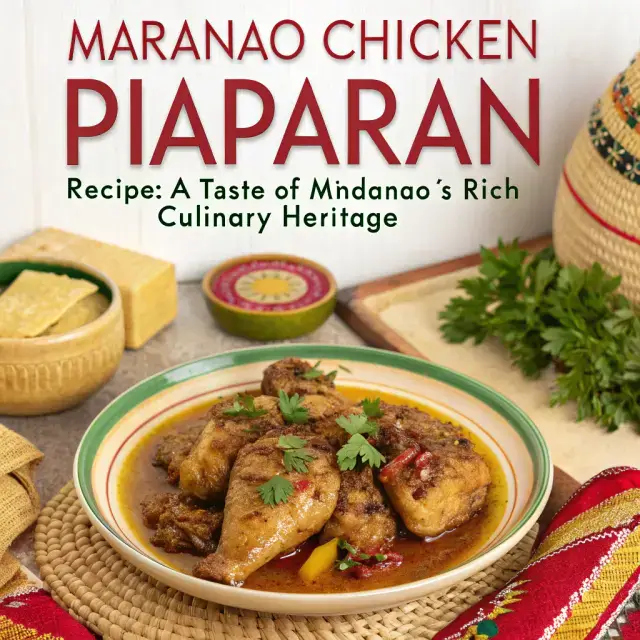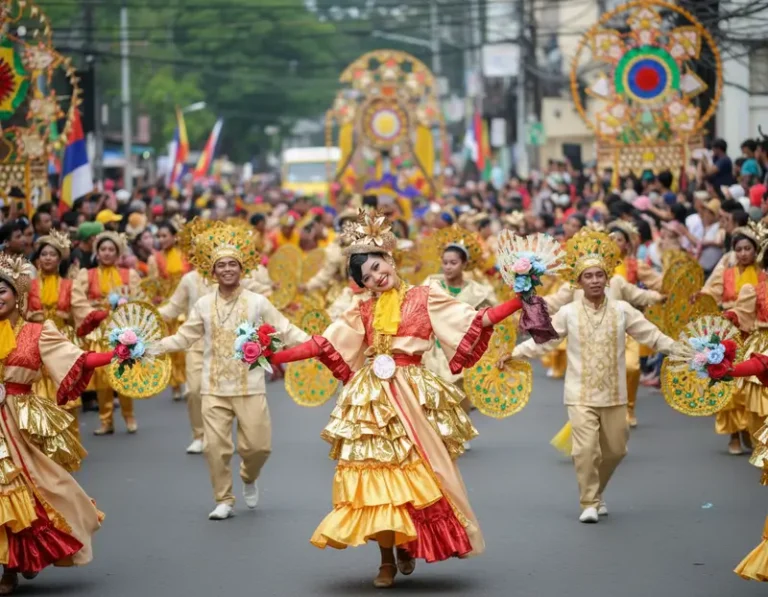Filipino Family Roles: Traditional Values & Modern Impact
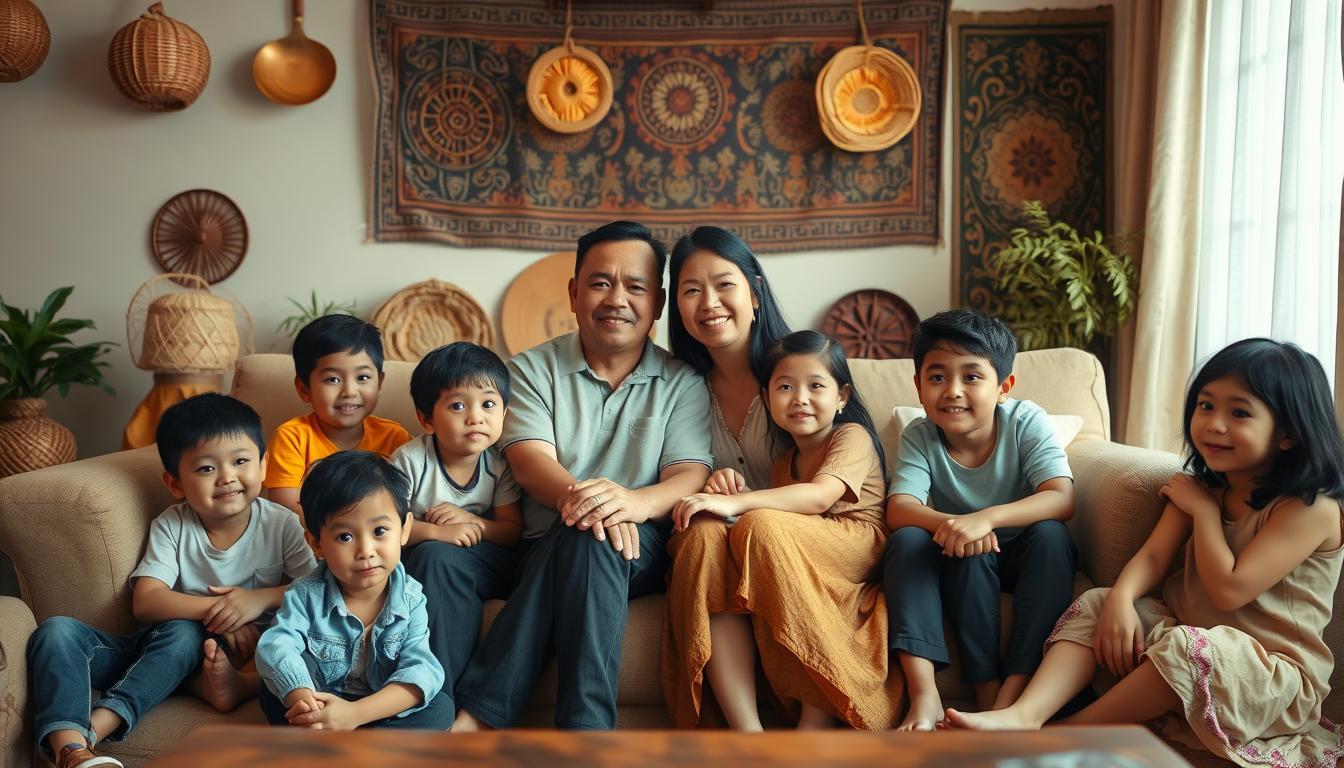
In many cultures, the family unit serves as the foundation of social life. Few places reflect this truth more vividly than the Philippines, where kinship ties shape daily life and community bonds. The term kapamilya—meaning “belonging to the family”—captures this interconnectedness, extending beyond blood relations to include lifelong friends and neighbors.
Traditional households often include grandparents, aunts, and uncles working together to support younger generations. Elders guide decision-making, while parents prioritize their children’s education and well-being. This structure fosters a shared responsibility to meet collective needs, from childcare to financial stability.
Modern influences, however, are reshaping these dynamics. Urbanization and global opportunities have introduced new challenges, such as transnational parenting and evolving gender roles. Despite these shifts, respect for elders and intergenerational cooperation remain central to maintaining cultural identity.
This article explores how traditional values coexist with contemporary changes. Topics include filial piety, household structures, and the balancing act between preserving heritage and adapting to progress. Real-life examples and cultural studies highlight both resilience and transformation within these communities.
Key Takeaways
- Extended family networks form the backbone of social and emotional support.
- The concept of kapamilya emphasizes lifelong belonging and mutual care.
- Intergenerational collaboration ensures stability across generations.
- Modern pressures are redefining responsibilities while preserving core values.
- Upcoming sections analyze household roles, gender dynamics, and cultural adaptation.
Foundations of Filipino Family Roles
In the Philippines, kinship networks form the bedrock of community life. These connections go far beyond parents and children, creating a safety net that spans generations. Shared responsibility and collective care define daily interactions, shaping everything from education to financial decisions.
Family as the Cornerstone of Society
The kapamilya mindset transforms ordinary relationships into lifelong bonds. Close friends become “aunts” or “uncles,” while neighbors earn titles like “cousin.” This practice strengthens unity, making everyone feel part of a greater whole.

Three-generation households remain common, with grandparents guiding childcare and cultural traditions. Data shows 63% of urban homes include extended relatives, compared to 89% in rural areas. This structure ensures wisdom passes seamlessly to younger members.
| Aspect | Nuclear Family | Extended Network |
|---|---|---|
| Average Size | 3-4 members | 6-12 members |
| Primary Support | Immediate needs | Lifelong security |
| Cultural Role | Basic unit | Community anchor |
The Extended Family Network
Celebrations like Noche Buena showcase how blood ties blend with chosen relationships. Distant cousins help prepare meals, while godparents contribute to education funds. This web of support explains why 78% of adults consult multiple relatives before major decisions.
Economic challenges have reinforced these bonds. When jobs require relocation, extended networks provide housing and childcare. This flexibility allows cultural values to thrive despite modern pressures.
Traditional Values and Filial Piety in Filipino Culture
Cultural traditions often define a society’s moral compass. At its core, respect for elders shapes daily interactions and long-term decisions. This principle, paired with utang na loob—the debt of gratitude—creates a framework where obligations strengthen bonds across generations.

Respect for Elders and Its Importance
Children learn early to address seniors with honorifics like po and opo. These terms signal deference in conversations. A 2023 study found 82% of young adults consult grandparents before career moves, blending modern choices with ancestral wisdom.
| Practice | Expression | Impact |
|---|---|---|
| Blessing Hands | Touching elders’ hands to forehead | Symbolizes humility |
| Shared Meals | Elders eat first | Reinforces hierarchy |
| Decision-Making | Multi-generational input | Balances perspectives |
Utang na Loob: Duty and Gratitude
This concept goes beyond simple repayment. When parents sacrifice for a child’s education, the child later supports their retirement. One nurse in Manila explains: “My salary covers my mother’s medicines—it’s how I honor her struggles.”
Community events like fiestas showcase these values. Relatives pool resources to fund celebrations, creating cycles of mutual aid. Such traditions ensure no one faces challenges alone.
Exploring Filipino Family Roles in a Modern Context
Global shifts are reshaping age-old traditions, creating new social scripts for households. Urbanization drives younger generations toward cities, while digital connectivity introduces global perspectives. These forces blend local customs with foreign ideas, sparking quiet revolutions in daily life.

Tradition Meets Innovation
Dating norms illustrate this transition. A 2023 study found 65% of urban couples now make joint decisions about marriage timelines—a stark contrast to earlier parent-led arrangements. Shared financial planning between partners has risen by 40% since 2015, reflecting egalitarian ideals.
Western media’s influence appears in subtle ways. Younger parents often balance ancestral child-rearing practices with psychology-based approaches. One teacher in Cebu notes: “We teach respect through stories of heroes, but also encourage kids to voice opinions.”
Redefined Responsibilities
Household leadership now adapts to practical needs rather than strict hierarchies. Dual-income homes require flexible chore divisions, with 58% of fathers reported sharing school-run duties. Economic pressures and feminist movements drive these changes, though elders sometimes view them warily.
Yet cultural roots remain vital. Holiday gatherings still prioritize elder blessings, and community ties buffer against rapid shifts. This dance between old and new defines modern relationships—honoring heritage while embracing progress.
Household Structures and Transnational Connections
Shared living spaces often bridge generations, creating webs of support that stretch across oceans. In many homes, grandparents, parents, and children share responsibilities under one roof. This setup allows wisdom and resources to flow freely, even as global opportunities pull members apart.
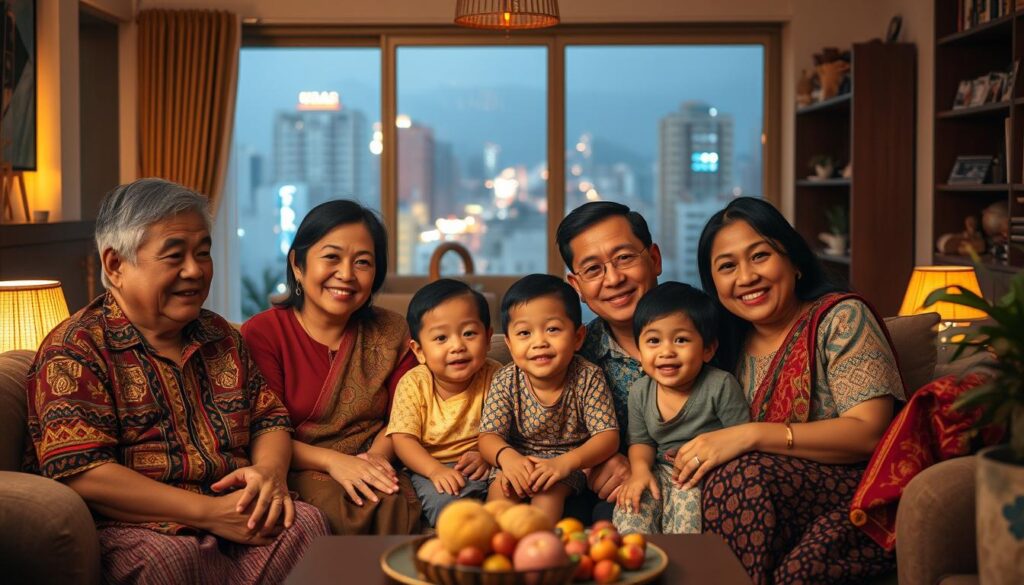
Living in Three Generations
Grandparents frequently manage daily routines while parents work. A 2022 study found 61% of households rely on elders for childcare. “Lola (grandmother) teaches my kids traditional songs while I’m at work,” shares a Manila teacher. This intergenerational teamwork keeps cultural practices alive.
Overseas employment reshapes these dynamics. Over 60% of migrant workers are women, often sending funds home. Remittances reached ₱36.14 billion in 2022, covering education and medical needs. Families use video calls to maintain bonds, though spotty internet sometimes disrupts connections.
Overseas Employment and Remittances
Monthly care packages called balikbayan boxes symbolize this exchange. These shipments contain snacks, clothes, and school supplies—tangible reminders of love across distances. One nurse in Dubai explains: “Sending these boxes lets me parent from afar.”
Extended relatives fill care gaps when parents migrate. Cousins help with homework, while aunts handle school meetings. Though separation strains relationships, shared goals keep the structure intact. As one teen notes: “We miss Mom, but we’re saving for a better home.”
Gender Roles and Power Dynamics in the Filipino Home
Households often serve as laboratories for social change. While traditional structures emphasize clear divisions, evolving norms are rewriting domestic scripts. These shifts reveal how cultural values adapt to new realities without losing their core identity.
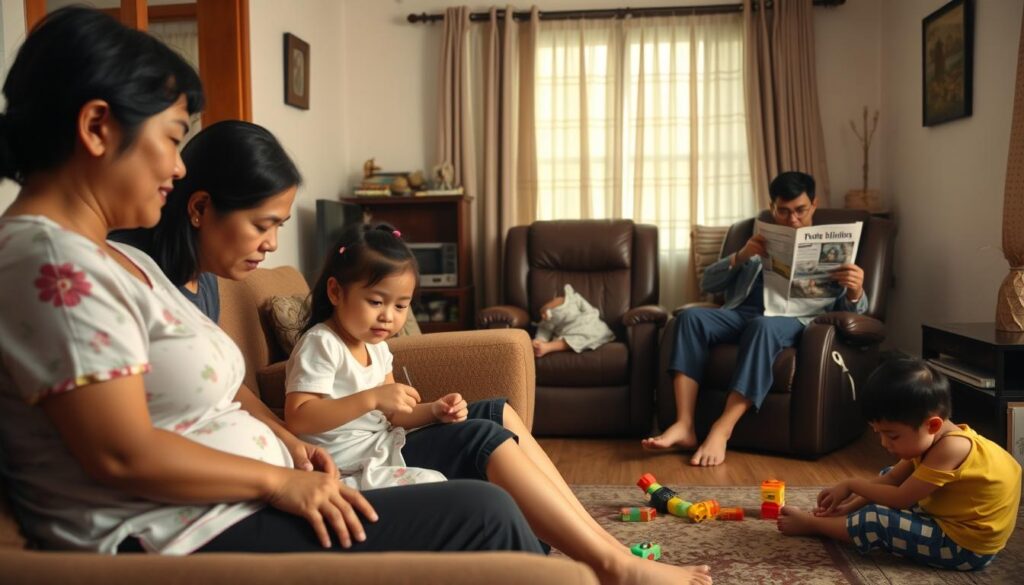
Patriarchal and Matriarchal Influences
Legal frameworks historically positioned men as household heads. Yet, the Civil Code grants women authority over daily finances and resource allocation. A 2023 study found 68% of wives manage budgets in urban homes, even when husbands earn more.
| Aspect | Traditional | Modern |
|---|---|---|
| Financial Control | Male nominal leadership | Female-led budgeting |
| Care Responsibilities | Women handle 90% of chores | 53% shared task distribution |
| Decision-Making | Elder consultation required | Spousal collaboration prioritized |
Modern Shifts in Gender Expectations
Dual-income households now represent 49% of families nationwide. This trend drives egalitarian practices, like fathers coaching sports teams or mothers leading business ventures. “My husband does school runs while I manage our store,” shares a Cebu entrepreneur.
The 1987 New Family Code accelerated these changes by removing spousal consent requirements for careers. Youth surveys show 74% of Gen Z respondents expect equal chore divisions—a 30% increase from their parents’ generation.
These transitions reshape power structures. Shared responsibilities foster collaborative decision-making, though elders sometimes question rapid changes. As one grandmother observes: “We taught obedience, but today’s kids negotiate everything.”
Community Impact through Family Relationships and Values
Cultural rituals do more than preserve heritage—they build bridges across entire towns. When households unite through shared traditions, they create safety nets that uplift entire neighborhoods. This interdependence transforms personal connections into community assets.
Social Support Networks and Cultural Celebrations
Weekly gatherings at local chapels demonstrate how care extends beyond blood ties. A teacher in Laguna shares: “After typhoons, we practice bayanihan—moving entire houses together. It’s not just help; it’s how we rebuild trust.” These acts strengthen communal resilience while honoring ancestral customs.
Annual fiestas reveal the economic power of collective effort. Relatives pool funds to hire musicians, while neighbors compete in cooking contests. A 2023 survey found 76% of towns use these events to fund school repairs and medical aid.
| Traditional Support | Modern Adaptation |
|---|---|
| Shared crop harvesting | Crowdfunding for emergencies |
| Oral storytelling nights | Community social media groups |
| Rotating childcare duties | Co-op preschool programs |
Mourning rituals like pagluluksa show how grief becomes communal. For nine nights after a death, visitors bring meals and share stories. This practice eases burdens while reinforcing cultural continuity—proof that shared values outlive individual lifespans.
Challenges and Evolving Traditions in Filipino Families
Balancing heritage with modern demands tests households worldwide. Economic pressures and overseas work reshape daily life, creating tension between tradition and adaptation. Over 60% of breadwinners work abroad, leaving grandparents to manage childcare—a shift that strains bonds while demanding creative solutions.
Modern Family Stressors and Adaptation
Prolonged separations due to overseas jobs impact emotional connections. A 2023 study found 44% of teens feel disconnected from parents working abroad. Video calls help, but time zones and spotty internet disrupt routines. “We talk during her lunch break, but it feels rushed,” shares a 15-year-old in Cebu.
New expectations clash with traditional duty. Career-driven millennials delay marriage, sparking debates with elders. Meanwhile, 93% of grandparents provide daily care for grandchildren—a role linked to elevated stress levels. Families now negotiate boundaries through weekly meetings or counseling apps.
Navigating Change in a Globalized World
Traditional hierarchies bend under modern realities. Dual-income homes redistribute chores, while LGBTQ+ members advocate for recognition. “My lola struggled when I came out,” explains a Manila teacher. “But sharing meals helped us find common ground.”
- Hybrid celebrations merge fiesta traditions with virtual gatherings
- Financial apps let overseas workers track budgets collaboratively
- Community workshops teach conflict resolution skills
Open communication emerges as vital for bridging gaps. As one social worker notes: “Respect elders, but let youth voice needs—that’s how traditions evolve.” This balance helps the family unit thrive amid relentless changes.
Conclusion
Cultural heritage and modern realities coexist dynamically within households, revealing resilience in the face of global change. Extended networks remain vital, blending ancestral wisdom with innovative solutions. Shared responsibilities and intergenerational cooperation continue to anchor communities, even as digital connectivity reshapes daily interactions.
Filial piety persists through gestures like caring for elders and collaborative decision-making. Gender dynamics evolve, with spouses increasingly sharing financial planning and domestic tasks. These shifts reflect pragmatic adaptations rather than abandonment of core principles.
Transnational parenting and urban migration test bonds, yet creative strategies—virtual gatherings, crowdfunded projects—strengthen ties. Respect for seniors endures, evident in rituals like blessing hands and communal meals. Duty to kin remains non-negotiable, bridging distances through remittances and care packages.
Looking ahead, households may embrace hybrid traditions. Technology could enhance ancestral practices, like apps tracking utang na loob obligations. However, the essence of unity—nurtured through laughter at fiestas or quiet acts of service—will likely endure as society’s compass.

